December, 1920
The Premiere |
The film was first screened in Stockholm theaters on December 12, 1920. This advertisement told the story of a family whose home had been burned.
Now they are helped by the staff of Bergström's. Greta was assigned the role of the eldest daughter. She comes to PUB with her family to replace their lost wardrobe. They are re-dressed “Från topp till tå (from head to toe)”. This was one of the store's mottos.
Greta's first romantic relationship |
Greta had attracted an older admirer during the making of the short film. Max Gumpel, a bachelor in his early thirties. He was the owner and manager of one of Sweden's most successful construction firms. He often visited the set. Gumpel's 7 old nephew Erick, was also in the film. Erick played Greta's little brother.
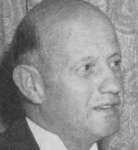
Gumpel in the 1930s
Years later Max said that he was very taken by Garbo. Greta liked his affable style and manner. One day he asked the 15 year old Greta to dine with him. She accepted and went to his glamorous apartment. Anna Gustafsson was pleased to see her with such a fine gentlemen.
One day Max made her a present. A tiny gold ring with a small diamond in it. The dated for a while but one day in 1921, they separated. They were still good friends afterwards.
Greta and Alva in En Lyckoriddare |
In late December, Greta took a week off from work. She and Alva had been promised work as extras in a motion picture. The film was En Lyckoriddare (A Fortune Hunter) The historical drama premiered in March 1921.

Movie Still from En Lyckoriddare
|
July, 1922
A third Advertising/Promotional |
Short Someday and 1922 a third Advertising or Promotional Film with Greta was made.It was called Sverige och svenska industrier. No infos are known and the short is lost. In this short film, Greta points at the town of Malmö on a wall map.
A new Director |
Producer/director Erik A. Petschler saw Greta in front of a shoe store. Greta captured the filmmaker's attention, Petschler was fascinated. He later saw her again, behind her counter at PUB.
Greta heard about the film he was planning and hoped to get a part. After a brief audition, Petschler offered her a part in his next film. The film was Luffar-Petter.
Greta decided to leave the PUB |
Greta hoped to get a release for the 2 weeks shoot. PUB declined and so Petschler asked the head of the PUB personally. He too had no success. Greta decided to leave the PUB after nearly 2 years.
On July 22, she had her last day in the department store and stated her reason for leaving as “To work on Film”. She was almost 16.
|
August, 1922
Luffar-Petter |
Filming of Luffar-Petter (Peter the Tramp). This was low budget comedy, directed and produced by Erik A. Petschler. It only had a budget of 15.000 Kronar and was filmed in Stockholm.
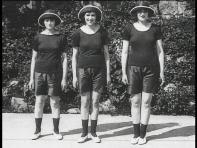 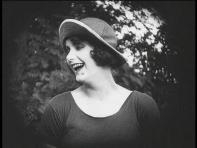
Screencaps from Luffar-Petter.
Back to a regular job
|
During filming, Greta was kinda afraid. She feared that she might had to accept a regular job again. Her family needed her support. Greta couldn't afford to stay unemployed for so long. She hoped to get a new film assignment after Luffar-Petter. She asked her co-stars for suggestions.
They suggested that she should look around for producers and directors in the Stockholm area to get a new job before filming of Luffar-Petter ended. Greta even tried to see Mauritz Stiller. Stiller had worked with Greta's Luffar-Petter co-stars. Unfortunately, Stiller was too busy with his latest film production.
Petschler's advice |
Petschler gave Greta the advice to do an audition for a scholarship at the Royal Dramatic Theatre Academy in Stockholm. Known as the Dramaten School.
Auditions for the next year, would be held by end in late summer 1922. Petschler also promised her to arrange a meeting with Frans Enwell. Enwell was once the head of the school. He now worked with young students privately. Petschler hoped that he would work with her.
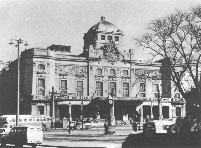
The Dramaten Theatre in the 1920's
Frans Enwell agreed to coach Greta
|
After their first meeting, Enwall agreed to coach her for the audition. They had less time, to work on the scenes they had chosen for the audition.
The Audition |
The day of her audition had come. Twenty jurists were waiting. Greta was frightened, she heard her name called, walked onto the main theatre and began reciting her speeches and scenes perfectly.
Greta had been accepted |
After some time, a telephone call finally told her the Greta news. She had been accepted. Greta was happy and thought she would almost die. Now she was on her way to become a real actress.
|
October/November,1924
Nils Asther |
Around this time Greta met Swedish actor Nils Asther at Dramatiska Teatern. When Aster saw her he was fascinated and even had a crush on her. But Greta turned him down.
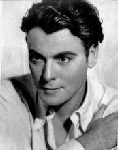
Nils Asther
More Stage Plays |
In October and November Greta played in Pär Lagerkvist's Den osynlige. On November 13 Greta performed in her final production on stage. She was on her way back to Berlin.
Louis B. Mayer |
On November 26, Greta Garbo reached Berlin. Around the same time Louis B. Mayer and his family arrived in Berlin. The Metro (soon known as MGM) head was in Italy. He checked the progress of the Metro production of Ben Hur. Stiller was introduced to Mayer in his Hotel Adlon suite.
They talked, in Yiddish and with the help of an interpreter, about films. Mayer wanted Stiller to come to USA and make films for his new formed company – MGM. The legend is that Stiller said that if they wanted him they also have to sign Garbo.
This is a long story. Anyway, Mayer wasn't sure about signing Greta too. So, Stiller arranged a private screening of Gösta Berling Saga for Mayer. Mayer was sold on Greta by the end of the first reel. He said that it was her eyes. There was a softness and a womanliness about her that Mayer found quite appealing. He said that he will take Stiller, all right. As for Greta, he even wanted her more than Stiller. "I can make her a star", he said. Some time later, they confirmed an agreement.
The Letter of Agreement |
A letter confirmed their oral agreement. MGM would pay his first-class fare to Los Angeles. They wanted him to set sail on May, 1925.
|
December, 1924
Constantinople |
Finally Stiller started the production of his Odalisken från Smolna. On December 3, Greta and Stiller came to Turkey. The team lived at the Péra Palas Hotel in Constantinople. Garbo's leading men for the film, actors Einar Hansson and Conrad Veidt, would soon follow. For the team the days in Constantinople were filled with preparations and chaotic work.
 
GG in constantinople
Stiller wanted to shoot the film in Turkey cos it would have been cheaper. But there hadn't been much time to make the proper arrangements during his previous trip to Constantinople and soon production in Turkey would be complicated by the unstable political situation, many foreigners were suspected of being spies.
Odalisken från Smolna |
Odalisken från Smolna told the story of an aristocratic Russian girl, who flees from the political confusion of her homeland and stows away on a ship, hoping to find her lover in Constantinople.
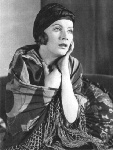
Garbo in costume
But the ship's crew sells her into slavery as an odalisque (concubine) in the harem of a Turkish prince. Some camera and location tests with Greta and Einar were filmed. This footage is lost.
Money Problems |
After only two weeks the production had money problems. Stiller used the money advanced to him by Svensk Filmindustri and Trianon only gave the company a small amount of money. The Trianon office never answered the telegrams from Constantinople.
On Christmas day, Stiller went back to Berlin to find out what had gone wrong. The Trianon Film AG were rumoured to be bankrupt. The production of Odalisken från Smolna was put on hold.
Director G. W. Pabst |
The News, that Trianon had collapsed and that Mauritz Stiller and his company were left in Constantinople, already spread around Europe.
Director G. W. Pabst heard about their situation and went to the Trianon offices and told them that he wants to use Garbo. Pabst was in pre-production of Die Freudlose Gasse (A Joyless Street). He tried to buy Greta's contract but the Trianon were uninterested.
They told him that nobody can make a picture with her cos they still want to make this big picture and that those rumours of bankruptcy were not true. Another rumour was that an American production company might finance the film too. Nothing is known about this. Maybe MGM?
Greta's time in Turkey |
Stiller was in Berlin, sorting out the problems. Greta and the whole team stayed in Turkey. She spend her first Christmas away from home. She was invited to the Swedish consulate several times and went to parties there twice. On New Year's Eve, she went to a party in an Oriental gown.
It was of red and gold silk, Stiller had purchased it for her. There was a rumor that Einar Hansson and Garbo were romantically involved. Garbo was now waiting for Stiller and hoped that they could start filming soon.
|
